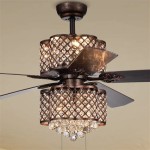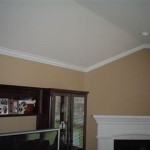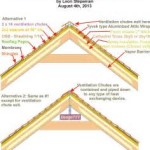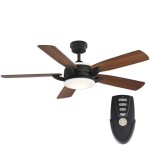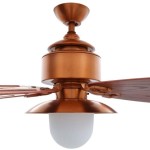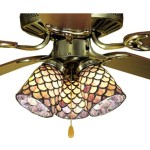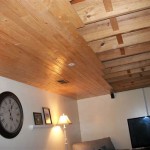Types of Ceiling Fans and Their Benefits
Ceiling fans are a vital addition to any home, providing a cost-effective way to improve comfort and energy efficiency. With a wide variety of styles and features available, choosing the right ceiling fan for your space can be a daunting task.
To help you make an informed decision, here's a guide to the different types of ceiling fans and the benefits they offer:
Standard Ceiling Fans
Standard ceiling fans are the most common type and feature a single motor with several blades. They provide basic airflow and are suitable for small to medium-sized rooms. Standard ceiling fans are affordable and available in a variety of finishes to match your décor.
Hugger Ceiling Fans
Hugger ceiling fans are designed to sit close to the ceiling, making them ideal for rooms with low ceilings. They are often used in bedrooms, kitchens, and hallways. Hugger ceiling fans provide excellent airflow at a lower height, ensuring comfort without compromising headroom.
Flush Mount Ceiling Fans
Flush mount ceiling fans are similar to hugger fans but are mounted directly against the ceiling. They have a low profile and are ideal for spaces with extremely low ceilings or where a more discreet fan is desired. Flush mount ceiling fans provide focused airflow and are especially suitable for smaller rooms.
Ceiling Fans with Lights
Ceiling fans with lights combine the benefits of a ceiling fan and a light fixture into one convenient unit. They provide both airflow and illumination, making them a versatile option for living rooms, bedrooms, and home offices. Ceiling fans with lights are available in a range of styles, from traditional to modern, and can accommodate different types of bulbs.
Smart Ceiling Fans
Smart ceiling fans offer advanced features such as remote control, voice control, and mobile app integration. They allow you to adjust fan speed, lighting, and other settings from anywhere in your home. Smart ceiling fans can be integrated into home automation systems, providing additional convenience and energy savings.
Benefits of Ceiling Fans
In addition to providing cooling airflow, ceiling fans offer numerous benefits, including:
- Energy efficiency: Ceiling fans circulate air, creating a cooling effect that can reduce the need for air conditioning, resulting in lower energy bills.
- Improved air circulation: Ceiling fans distribute air evenly throughout a room, eliminating hot and cold spots and improving overall comfort.
- Reduced humidity: By increasing air circulation, ceiling fans help reduce humidity levels in a room, creating a more comfortable and healthier indoor environment.
- Enhanced lighting: Ceiling fans with lights provide additional illumination, which can reduce the need for additional light fixtures.
- Decorative value: Ceiling fans are available in a wide range of styles and finishes, making them an attractive and decorative addition to any room.
When choosing a ceiling fan, consider the size of your room, ceiling height, and the desired features. By selecting the right fan for your space, you can enjoy the benefits of improved comfort, energy efficiency, and enhanced aesthetics.

What Is Bldc Ceiling Fan And How It Works

Ppt What Are The Diffe Types Of Ceiling Fans Powerpoint Presentation Id 7517155

Finding The Best Energy Efficient Fans For Your Home

16 Best Ceiling Fans For Extra Airflow In 2024

Fans Of All Types Ceiling Personal Table Exhaust And Many More Goldmedal

Ceiling Fan Wikipedia

Ceiling Fan Guide The Home Depot

What Size Ceiling Fan Do You Need For Your Room Dan S City Fans Parts Accessories

Average Ceiling Fan Installation Cost In 2024 Forbes Home

Ceiling Fan Guide The Home Depot
Related Posts

